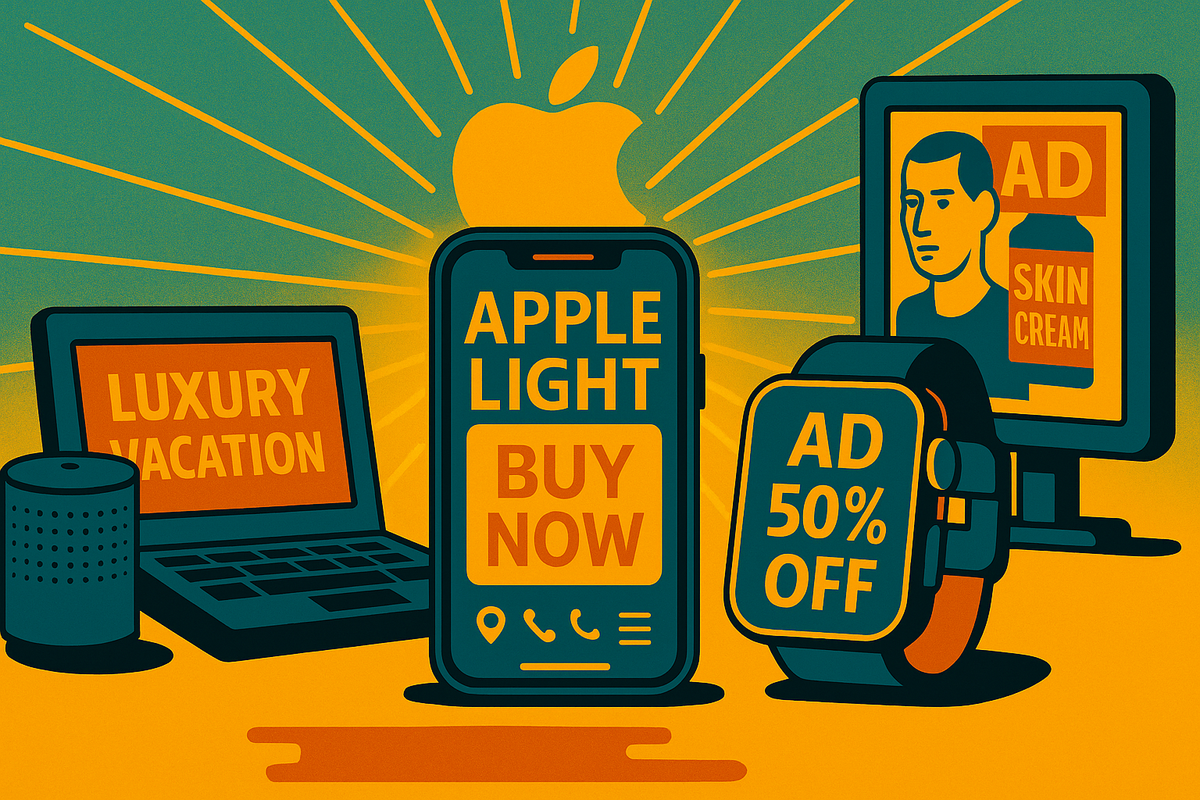Apple Launches Ad-Subsidized Tier Across Its Ecosystem

Apple's method finally allows consumers to experience ads that invade their privacy without compromising it.
CUPERTINO, CA. — In a move that blurs innovation and intrusion, Apple has introduced Apple Light, an unprecedented ad-supported option spanning its entire product ecosystem. Citing longer hardware upgrade cycles, crushing tariffs, and anticipation of a global recession, Apple aims to mitigate these risks by integrating system-level ads directly into surfaces like Maps, FaceTime, Music, and even the MacBook "Spinning Beach Ball of Death".
Apple Light also uniquely integrates with HomeKit, encouraging device manufacturers to expose ad inventory within connected home products. "Our goal," stated Molly Chen, Apple's Senior VP of Strategic Ad Monetization, "is a beautifully orchestrated, fully private AI-driven advertising ecosystem that runs locally on your personal hardware."
As analysts anticipate large-scale advertiser budget shifts towards dominant platforms like Meta, Google, and Amazon, Apple's local-first advertising approach seeks to disrupt the status quo. By ensuring that no private user data ever leaves the user's devices, Apple's method finally allows consumers to experience ads that invade their privacy without compromising it. One industry analyst, Amanda Hooper from Tech Insights, remarked dryly, "Now we finally understand what Apple's been busy with instead of upgrading Siri for their so-called Apple Intelligence, which, let's be honest, turned out to be vaporware. Apple Light, on the other hand, is real. The deeper users immerse themselves in the Apple ecosystem, the more personalized and relevant the ads become, dynamically tailored to their daily routines."
Early users have reported startlingly effective, if unsettling, ad placements. An early beta participant noted, "My refrigerator suggested almond milk after overhearing me complain about lactose intolerance. Truly helpful, yet profoundly disturbing." Another user described a scenario where a casual bathroom discussion with their spouse about a skin condition triggered a seamlessly choreographed response from their iPhone, Apple Watch, and smart bathroom mirror. The devices collectively analyzed the user's biometrics and conversation, presenting a precisely targeted dermatological product on their mirror's display. "Honestly, it worked perfectly," the user remarked hesitantly, "but now I feel like my mirror knows me better than my therapist."
While the technology is groundbreaking, advertisers remain cautious about Apple's opaque, black-box approach, criticizing the company for sidestepping open standards like OpenRTB. Senior VP Chen responded with a shrug: "We started with OpenRTB. Transparency sounded great in theory, and people loved Apple Light in early tests until someone uttered 'open protocol'. For consumers, an open auction protocol conjures a swarm of unknown bidders rifling through their data. When we reminded them that nobody really understands how this AI magic works, they relaxed, comforted by the thought of their data securely hidden within a digital labyrinth so complex even Apple's engineers can't find it. Convincing customers that open protocols were secure enough to display ads in their most private spaces was always going to be an uphill battle anyway."
At press time, insiders reported Apple engineers were privately concerned that Apple Light had started delivering oddly personalized ads directly to their pets. However, such chatter dissipated quickly after complimentary espresso machines appeared, eerily dispensing perfectly timed cortados whenever dissent was overheard in the office.




